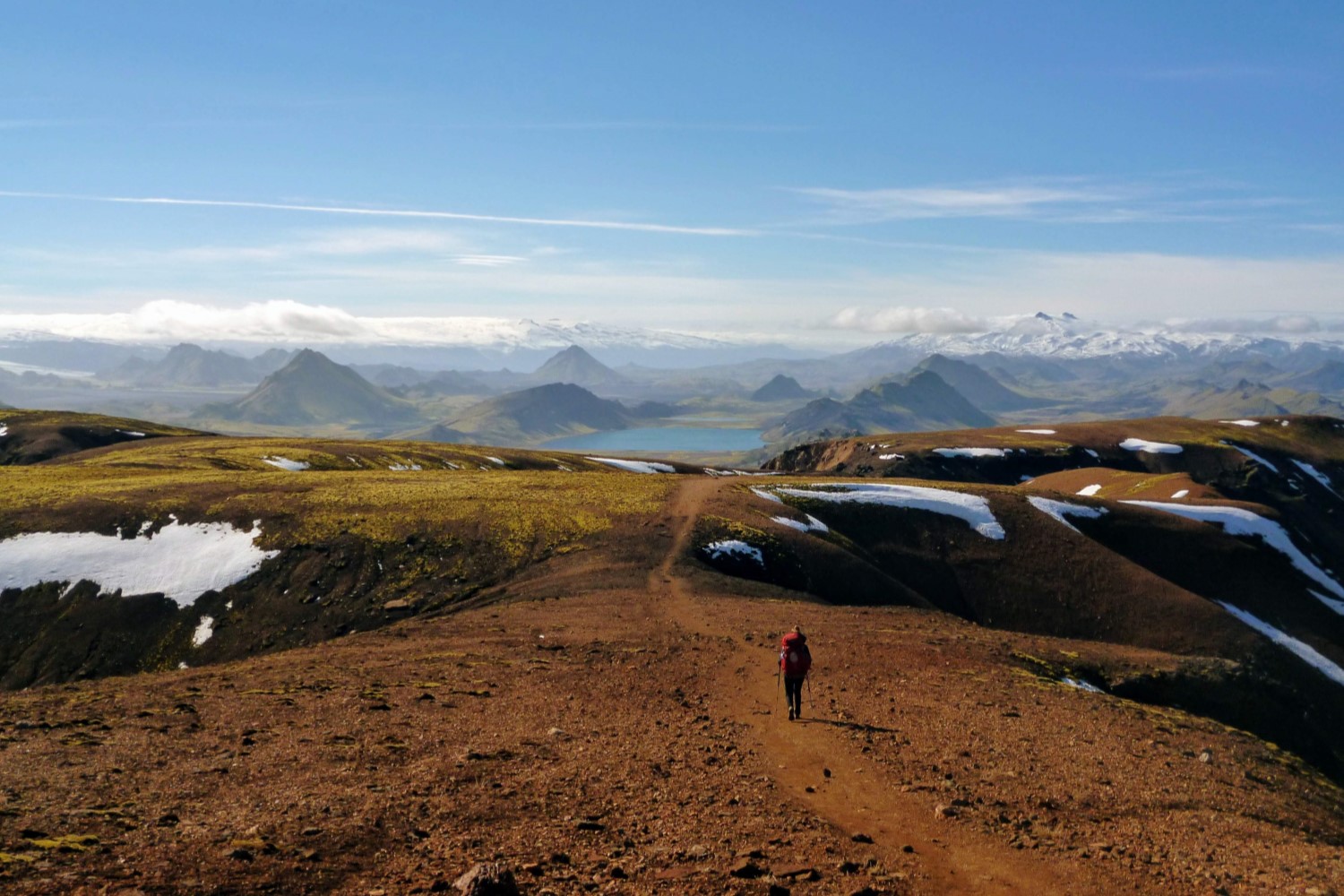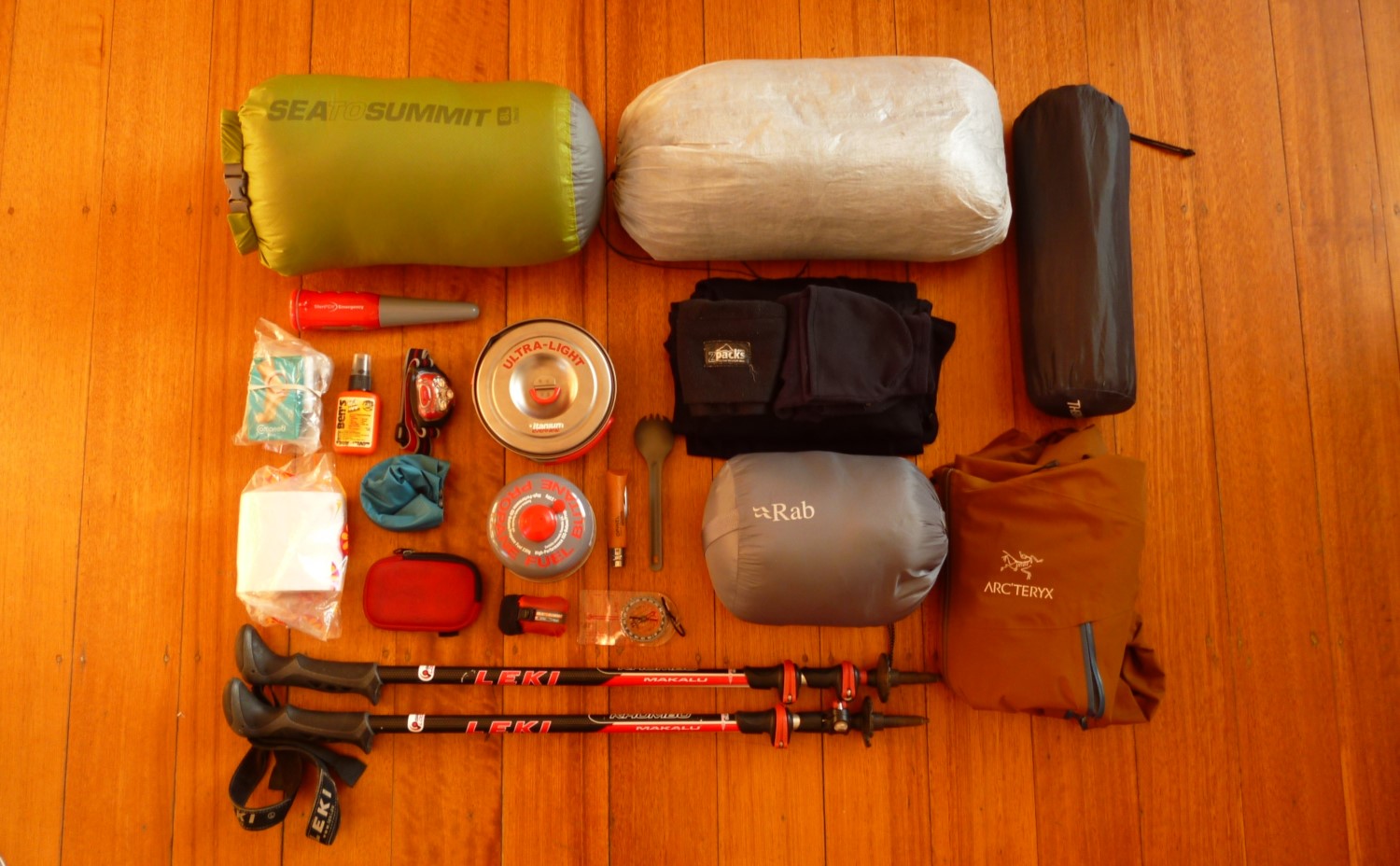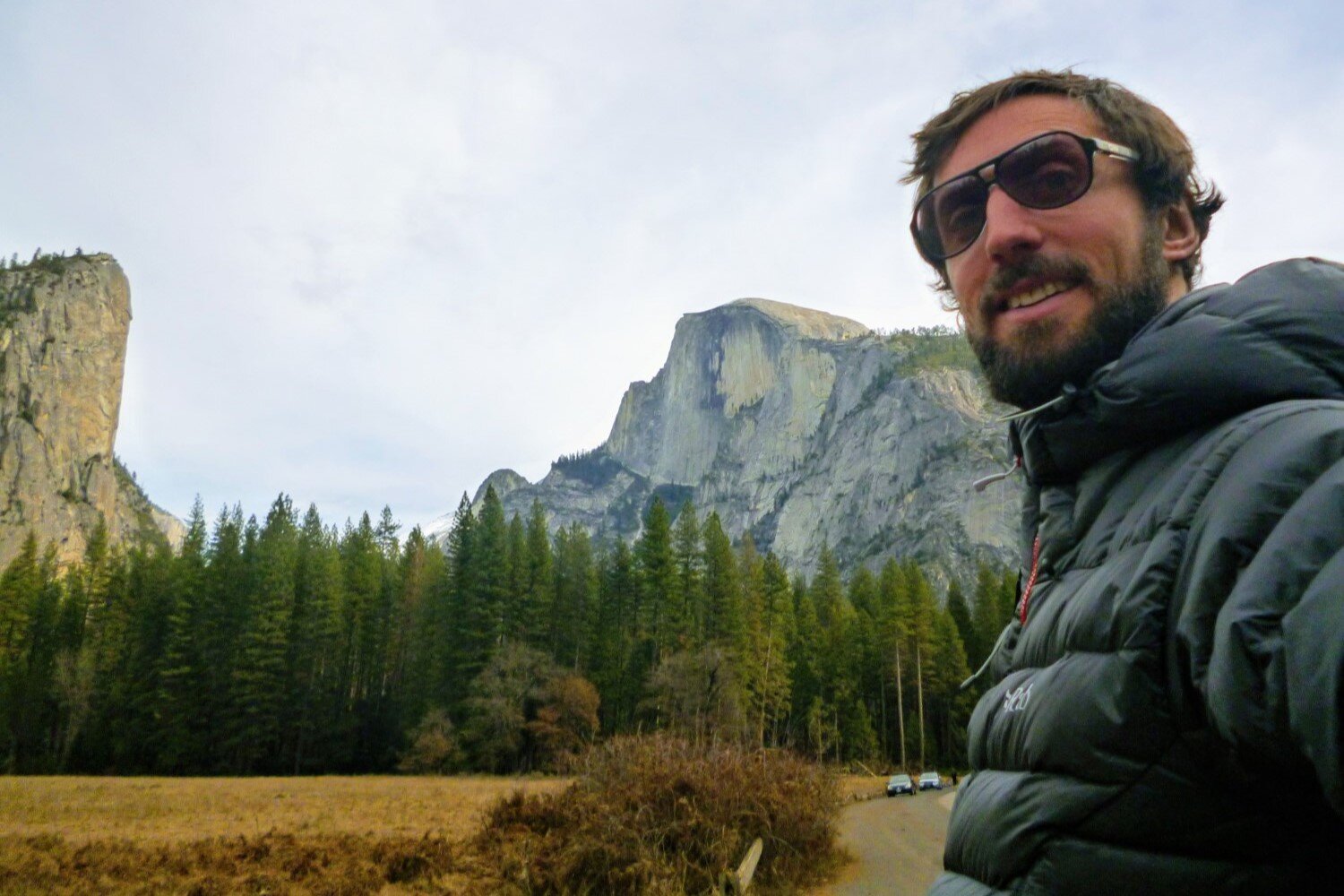Sport Climbing vs Traditional Climbing — WTF is the difference?
JUMP TO: LEAD CLIMBING — A QUICK REFRESHER / SPORT CLIMBING / TRAD CLIMBING / KEY QUESTIONS / EQUIPMENT / HOW TO GET STARTED / SUMMARY
Author: Tim Severino
For people who are new to rock climbing, top rope will almost certainly be where their journey begins.
Top rope climbing is the natural starting point for beginners since it can be done indoors and outdoors, is very safe, and requires a relatively small amount of knowledge and skills to get started.
But top rope is limited in its scope. It can only be done in certain locations and for many climbers it isn’t as rewarding as more challenging forms of rock climbing.
Lead climbing is the logical next step after top rope, and by learning to lead climb you can say goodbye to well-trodden beginner walls and gyms. Instead, you can seek out both established and unestablished crags around the world!
Lead climbing is logistically easier than top rope since it requires less set up, but it is higher risk and requires more skills and knowledge to get started. Yet, because of the additional risks and challenges, lead climbing generally intensifies your mental focus while climbing and provides a greater feeling of achievement.
There are two forms of lead climbing: sport climbing and traditional climbing (known as “trad”).
In this article we break down sport climbing and trad climbing in detail, focusing on their similarities and differences, as well as describing the skills, knowledge, and equipment required for each.
So, no matter which type of lead climbing you plan to undertake (or maybe both!) you’ll be hitting the crag armed with the right information.
LEAD CLIMBING — A QUICK REFRESHER
We’ll briefly describe lead climbing in a general sense. But if you’re already familiar with lead climbing and how it differs from top rope, then feel free to skip on to the next section where we focus in on sport and trad.
In lead climbing we still have the climber and the belayer, but no top rope connected to an anchor at the top of the cliff. Instead, there is only a rope connecting the two people.
Essentially the climber has to climb up to a point where they can make themselves safe, then keep going up past the “safe point”, and then make themselves safe at various points in the climb until they reach the top.
The safe point will either be a temporary protection installed by the climber as they go, or a permanent (pre-installed) safe point such as a bolt or a sling. To connect to the safe point the climber generally uses some equipment called a quickdraw.
A quickdraw is two carabiners joined by a strap where one end goes into the safety point as you climb up and your rope goes through the other. This allows the rope to move freely, thereby allowing the belayer to still control the length of the rope, but also creates a safety point on the rock.
Once at the top of the climb, the leader uses a pre-installed anchor or creates their own and then either gets lowered to the ground or walks off the top (single pitch) or belay’s their partner up and they continue on even higher (known as a multi pitch).
SPORT CLIMBING
Sport climbing is the most popular form of climbing worldwide for people who have their own equipment and the necessary skills and experience. It is a form of lead climbing where the climber doesn’t need to install the “safe points” as they go.
Instead, the length of the climb has pre-installed metal bolts (or slings wrapped around rocks) every 2-5m for the climber to place their quickdraw, and then subsequently, their rope into. When done correctly, the bolts should be placed to protect you on the more difficult moves so you don’t fall very far.
There is generally a fixed anchor at the top for the climber to use to come back down again. Plus, there are different methods for retrieving quickdraws on the way back down.
Sport climbing is best suited to people who want to focus on the athletic aspects of climbing. Because the safe points are pre-installed, the climber can move faster than they can in traditional climbing. Plus, since they don’t need as much equipment, they carry less weight and can therefore attempt more difficult moves.
TRAD CLIMBING
In trad climbing you carry a load of extra equipment – called a ‘trad rack’ – to make your own safe points. A trad rack consists of various shaped pieces of metal that come in many different sizes. Some are passive (they nestle into cracks in the rock) and some are active (they use springs to push back at the rock).
In a nutshell, the climber goes up until they can find a crack or a break in the rock where they can place a trad piece to use as their safe point. Generally, they will climb partway up a climb, make a temporary anchor, and then belay the other person up. The second climber then removes the pieces as they go.
Trad climbing requires climbers to be more self-reliant, since they are carrying all the gear they require to remain safe on the rock. But because it doesn’t require pre-installed bolts, a trad climb can be any length, including what we call “multi pitch”.
Trad climbing is best suited to those who want to accentuate the self-reliance and adventure driven aspects of climbing. Since the trad rack is heavy, both climbers will be carrying a fair bit of extra weight. This means that people generally climb easier grades of difficulty than they would when sport climbing.
KEY QUESTIONS
Which is safer?
Most people would intuitively think that sport climbing is the safer of the two. But it’s not quite as simple as that.
It’s true, trad climbing does pose greater risks since the safe points aren’t permanently fixed. But there is an old adage: ‘the leader never falls’. This refers to the fact that most (but not all) trad climbs happen on lower grades, to compensate for the added weight of the equipment.
Sport climbers on the other hand fall more often, as they are more confident of the protection and are often pushing their grades to the limit. In sport climbing the bolts are high quality stainless steel or titanium and can hold over 2,000kg of force. So it is falls and collisions with the rock that pose the greatest danger, rather than the equipment coming loose.
Paradoxically, the hardest sport routes are sometimes the safest, since especially hard climbs often have overhanging sections – meaning you will fall into free space and not down onto a cliff ledge!
Trad gear can take big loads as well, provided it is placed correctly. But it is the opportunity for poor placement that increases the risk. Having said that, a climber tends to place safe points more regularly on a trad route than there would be bolts on a sport route, to compensate for the added risks.
Which is easier?
In terms of the technical knowledge required, sport climbing is easier than trad climbing.
The skills we need to trad climb safely (and safety should always be absolutely paramount) take a lot longer to learn. Clipping quickdraws into permanent bolts requires far less experience and training than learning how to organize, assess, and correctly place the right bit of trad equipment in the right location.
However, in terms of grade difficulty neither is necessarily easier. Having said that, sport climbing is often done on more challenging routes than trad climbing, since there is less equipment to carry and less risks associated with it.
Which is more affordable?
Sport climbing is definitely more affordable than trad climbing, since trad climbing requires the same gear as sport climbing, plus more!
Provided you have access to a climbing crag that is already set up with bolts and anchors, the total equipment cost for sport climbing is not particularly high. You will need to spend money – on shoes, ropes, harness, and more (see our equipment list below). But the total cost will be about half that of a trad climbing set up.
The additional cost in trad climbing is the trad rack itself – with a typical trad rack costing well over $1,000 USD. But with trad, you don’t need a crag set up for you – so in effect you can climb anywhere the rock is suitable.
It’s worth nothing that at popular climbing destinations around the world, you will be able to hire everything you need for sport climbing. But there are very few places that will hire out trad gear.
Which is faster to learn?
Sport climbing is faster to learn than trad climbing. You can learn to top rope in one day, and then learn to sport lead over two or three additional days. This includes how to clip properly, belay properly, make anchors properly, down climb, and retrieve equipment from failed climbs. Plus, over two or three days, you’ll be able to do plenty of easy climbs under supervision to ensure you have learnt correctly.
Trad climbing is a tad different. Some people learn trad before they learn to sport climb! But most people learn trad after they are proficient at sport climbing. That way they already know how to lead climb and can instead focus on adjusting to the new equipment. Since learning to use trad equipment safely can take a while, sport climbing is definitely faster to learn.
Both sport and trad routes can be multi-pitch, But with multi-pitch sport routes the climb will have to be an existing multi-pitch route where the bolts and anchors have been previously set up.
Which is used for multi-pitch?
Both sport and trad routes can be multi-pitch climbs. But with multi-pitch sport routes someone has to have placed the bolts and anchors to allow you to climb it. With trad routes, you make your own way and can climb as many pitches as the rock safely allows.
Which is more accessible?
Around the world there are sport climbing crags (on private or state land) that have been thoroughly bolted. These places almost always have a comprehensive guidebook that explains characteristics of the routes, such as height, number of bolts, who put the bolts in, who first climbed the route, and the grade.
Armed with the guidebook (or more likely a phone app these days!), you can climb and explore these crags very easily. Most countries have several of these crags and more are being set up all the time. Depending on the area, they may have fewer routes (e.g. 20) or many more (e.g. Krabi in Thailand has over 800!).
Trad climbing needs rocks that are suitable for placing trad gear – i.e. cracks and crack systems. As such, there are fewer areas that are suitable for trad climbing. Some climbing crags, like Mt Arapiles in Australia, are reserved exclusively for trad climbing, with no bolting allowed on them.
Which can be done indoors?
Most indoor climbing gyms are set up for easy grades of sport leading – with pre-placed bolts, an anchor, and sometimes even quickdraws. You may have to prove you can lead before the staff will let you climb.
Trad on the other hand is exclusively an outdoors activity, requiring real rocks to climb.
Which is more popular?
There is no question that these days sport climbing is far more popular than trad climbing.
Both are amazing fun, but its sport climbing’s accessibility, safety, and requirement for less equipment that make it so popular. You can sport lead in a gym. Plus, there are many outdoor crags set up around the world where you can climb safely and with far less equipment than is required for trad.
Some trad climbers will look down their nose at sport climbing, since the prerequisite bolts make it somewhat less “pure” – both in its style and adventure (i.e. it’s less self-reliant) and in its aesthetic (i.e. the bolts cause irreversible damage to the rock). But the accessible and athletic nature of sport climbing have definitely made its popularity surge.
EQUIPMENT
Sport climbing gear list
The following is the minimal list of gear you’d need for a sport climbing outing at the crag:
Climbing harness
Climbing shoes
Locking carabiner and belay device
Safety strap with locking carabiner
10-12 x Quickdraws
Chalk bag
Accessory cord for quick anchors, rescue, or escape belay — optional
Trad climbing gear list
Trad climbing requires all the equipment mentioned above for sport climbing plus the following additional gear:
A trad rack:
6 x Spring Loaded Camming Device (SLCD) or ‘friends’
6 x micronuts (or stoppers or chocks)
6 x nuts (or stoppers or chocks)
4 x slings of different lengths
3 x locking carabiners for anchors
1 x key (nut remover)
2-4 x Hexentics (or cowbells) — optional
Shoulder sling – optional
1 x reverso belay device for multi pitch — optional
The belayer should also consider:
1 x key (nut remover)
Spare rope
Spare carabiners
Spare accessory cord
Supplies bag with water, food, first aid kit, communication device
HOW TO GET STARTED
CLIMBING COURSES: Many climbers learn part or all of their climbing skills from friends or family. While there is nothing wrong with that; doing at least one climbing course will provide you with many tips, alternate methods, safety measures, and the latest procedures.
SPORT CLIMBING: You can learn sport climbing in the gym in a day easily enough, but it’s better to have some top rope experience first. Unfortunately a lot of people get caught out by learning sport climbing in a gym and then taking it outdoors without any further training.
Outdoors you need to deal with anchor systems and a range of other considerations that aren’t relevant indoors. So it’s best to take things one step at a time with an instructor or friends who can teach you.
Most gyms and outdoor climbing centers will offer between 2 and 5 day courses, depending on your previous experience.
TRAD CLIMBING: Many people learn to trad climb with family or friends and there is nothing wrong with that. Others may opt for a professional course as that (hopefully) helps ensure you are being taught the right up to date information and procedures.
Most (but not all) outdoor climbing centers will offer trad climbing courses. A trad course can range from 2 days to 2 weeks, and will often require a knowledge of at least top rope – if not sport leading – as a prerequisite.
SUMMARY
Lead climbing is really what rock climbing is all about. While sport climbing has certainly made rock climbing more accessible, trad climbing is still the true “expedition” approach to climbing – full of adventure and not requiring anyone to prep the wall for you.
However, a mix of both styles will help keep your climbing experiences fresh and varied – allowing you to push your grades on some established bolts one week and explore some remote unclimbed crag the next!
MORE INFORMATION
Looking for more information on climbing? Be sure to check out some of our other tips and gear reviews:
Or check out our entire Gear Reviews Page, our Knowledge Base Articles, or Destination Guides for more climbing and outdoors related content.





















